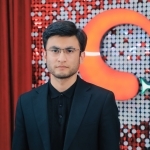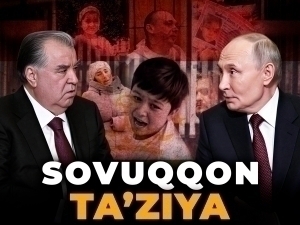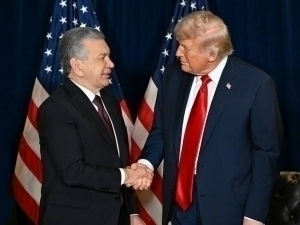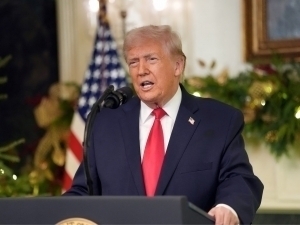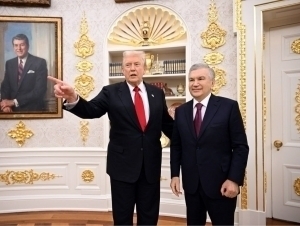From Riyadh to Abu Dhabi: Trump returns with trillions in deals
Review
−
16 May 9764 8 minutes
The most striking thing Trump has done since returning to power is to rename the Gulf of Mexico as the "American Gulf." None of the objectives, such as ending the trade war, stopping Russia’s invasion of Ukraine, halting the inhumane massacre in Gaza, or making the United States wealthier and greater, have been achieved so far. On the contrary, the situation has worsened. For example, due to the global economic war initiated by him, American companies have suffered trillion-dollar losses. Netanyahu is attempting to restart genocide in Gaza, and Putin shows no signs of ending his invasion of Ukraine. This has been dubbed the “Trump Effect” on social media and has led to widespread mockery of the U.S. President. Interestingly, even just hours after Trump allegedly brokered a ceasefire between India and Pakistan, hostilities between the two resumed. He has yet to achieve any substantial success in the political realm, even after four months in office.
However, Trump, a seasoned businessman, has conducted a masterclass in attracting foreign investment—especially from wealthy Arab monarchies—by securing mutually beneficial deals. For the remaining four days, Trump, who began his business career in 1968 in real estate and now has over five decades of experience, returned from the Middle East with his pockets full. The figures in the contracts signed with several Arab nations are astonishing. When he flew to Saudi Arabia, many speculated or at least hoped that he would attend the Ukraine-Russia negotiations scheduled for May 15–16 in Turkey. These talks were expected to be historic and critical for Eastern Europe. However, once it was confirmed that Trump would not meet with Putin in Istanbul, it became clear he would not be attending the summit. Yet his actions in the Middle East over a few days shifted the world's focus from Turkey to the Gulf. QALAMPIR.UZ has compiled a chronological summary of the U.S. President’s trip to the region and the results of his return with over $3 trillion in investments.
Saudi Arabia – $600 Billion
On May 13, Donald Trump began his multi-trillion-dollar Middle East tour from Saudi Arabia. This was his first international visit. Interestingly, Trump had also chosen Saudi Arabia for his first visit during his first term. It is no secret that President Trump has a close relationship with Prince Mohammed bin Salman. After Trump supported the young prince, who had faced international backlash following the murder of journalist Jamal Khashoggi by Saudi agents, the two have maintained strong ties. Even after losing the 2020 election, Saudi Arabia continued its business relationship with Trump. For instance, Riyadh invested $2 billion in a firm run by Trump’s son-in-law, Jared Kushner, and plans were announced to build Trump Towers in the kingdom.
During his recent visit, trade deals and investments from the Gulf into the U.S. were expected. Trump had previously stated that Saudi Arabia was prepared to invest $1 trillion in the U.S. economy. He had made this announcement back in January, requesting a $1 trillion investment over four years—including purchases of military equipment—and promised a foreign trip to sign agreements. While he didn’t receive the full amount, he didn’t leave Riyadh empty-handed either. Although the final deals didn’t reach $1 trillion, they still totaled over half a trillion dollars.
Saudi Arabia has agreed to invest $600 billion in the U.S. economy. The largest part of this deal, as expected, is in military cooperation. A $142 billion arms deal—the largest in history—was signed. According to Al Arabiya, this includes the supply of advanced U.S. military equipment to Saudi Arabia and services from more than a dozen American defense companies. The agreement also involves training military personnel, modernizing weapons systems, and supplying ammunition and spare parts.
Other smaller deals were signed in sectors such as energy, space exploration, mineral extraction, technology, and combating infectious diseases. Agreements included the supply of gas turbines and energy services worth $14.2 billion, and the purchase of Boeing 737 passenger aircraft worth $4.8 billion.
Trump also emphasized technological development for Saudi Arabia’s post-oil future. He brought CEOs from major U.S. tech companies, including Sam Altman (OpenAI), Jensen Huang (Nvidia), Arvind Krishna (IBM), and Elon Musk. These tech leaders accompanied Trump during his meetings with the Crown Prince. Saudi Arabia has long aimed to diversify its economy under the “Vision 2030” initiative. As part of this project, the Public Investment Fund announced the launch of an AI startup called “Humain” during Trump’s visit. This initiative aims to support economic diversification, human capital development, and digital sovereignty, by building large-scale data centers and AI infrastructure across critical sectors such as healthcare, energy, education, and government.
Beyond economics, Trump also announced the lifting of sanctions on Syria at an investment forum on May 13. This news was celebrated in Damascus. A day later, Trump met with Syrian interim President Ahmed al-Shara in Saudi Arabia. Previously labeled a terrorist by the U.S., Shara met face-to-face with Trump—despite a $10 million bounty once placed on him. The meeting, held in the presence of Saudi Crown Prince Mohammed bin Salman and Turkish President Erdoğan (online), marked the first such encounter in 25 years. Trump reiterated the U.S. decision to lift sanctions on Syria, claiming the sanctions had fulfilled their purpose and that Syria should now pursue reconstruction. However, the move likely came with conditions. According to the New York Post, Trump offered Syria the chance to join the Abraham Accords and recognize Israel.
The Abraham Accords, widely seen as Trump’s biggest diplomatic achievement in support of Israel, led to the UAE, Bahrain, and Morocco recognizing the Jewish state. These accords are named after the biblical Abraham, considered a common ancestor by both Jews and Arabs. So far, neither Saudi Arabia nor Syria have joined the initiative. Yet Trump offered the same proposal to the Saudis. The royal family has repeatedly stated it will not recognize Israel without a two-state solution to the Palestinian conflict. Syria, under Iran’s influence, was unlikely to join either. However, with sanctions lifted, $600 billion in Saudi investment, and record-breaking arms deals, it’s conceivable that both nations could change their stance.
Trump’s visit to Saudi Arabia set the tone with wide-ranging cooperation and massive deals. But that was just the beginning. He continued breaking records in the next destinations—Qatar and the UAE.
Qatar – $1.2 Trillion
On May 14, after completing his visit to Saudi Arabia, Trump traveled to Qatar. He was welcomed at the airport by Emir Sheikh Tamim bin Hamad Al Thani. The visit focused on the Gaza conflict and ongoing Hamas-Israel negotiations, where Qatar plays a mediating role. However, the primary focus quickly shifted to the massive $1.2 trillion in economic cooperation agreements.
The Gulf monarchies seemed to be competing over who would invest more in the U.S. After Saudi Arabia’s $600 billion, Qatar raised the stakes. Qatar agreed to purchase 210 Boeing 787 and 777X aircraft, and $2 billion worth of MQ-9 Reaper drones. For the first time, the U.S. also agreed to export counter-drone systems to Qatar in a $1 billion deal. The centerpiece was a deal to purchase over 160 Boeing aircraft worth nearly $200 billion, which Trump described as Boeing’s largest order in history.
During the visit, Trump and the Qatari Emir also discussed Ukraine, Gaza, and Iran. Trump mentioned ongoing serious talks between U.S. envoy Steve Whitkoff and Iranian Foreign Minister Abbas Araqchi. Three rounds of indirect nuclear talks between Tehran and Washington were previously held—two in Oman, one in Rome. These talks, mediated by a third party, included long technical negotiations on Iran limiting uranium enrichment in exchange for sanction relief. While Iranian officials have expressed both willingness and refusal to compromise, Trump insists the demand is simple: Iran must not develop nuclear weapons.
UAE – $1.4 Trillion
On May 15, Trump arrived in Abu Dhabi, UAE, for an official state visit. He was welcomed by President Sheikh Mohammed bin Zayed Al Nahyan and other top officials. A formal reception took place at the Qasr Al Watan presidential palace, where traditional long-haired dancers performed the “Khaliji” dance, typical of Gulf countries.
However, the main highlight of the visit was the announcement that the UAE would invest $1.4 trillion in the U.S. over the next 10 years. Trump thanked the UAE for its commitment, stating that these investments would bolster the AI sector. He emphasized that the U.S. economy was strong during his first term and would grow further in the second. Expressing confidence in the relationship with the UAE, Trump told Al Nahyan, “You’re a rich country, you can make your own choices, but I know you will never give up on us.” This echoed a past statement he made to the Saudi king: “You’ll be fine one day if I’m not around.”
Live
All